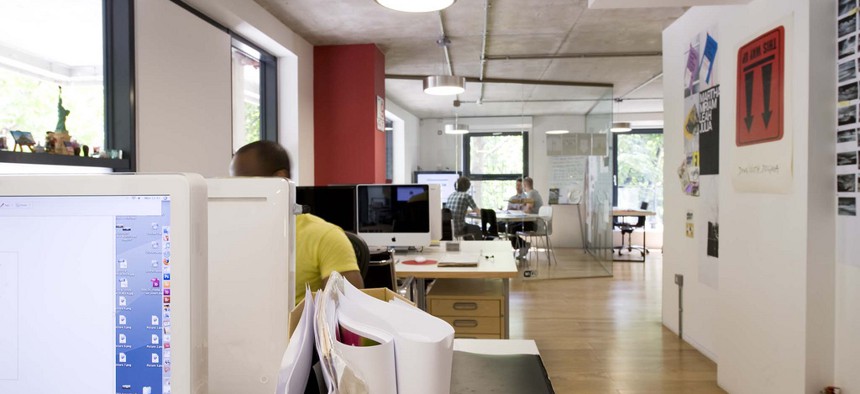
flickr user David Wall
What Could the Workplace Design Revolution Mean for Government?
Ever since the fluorescent cubicle seclusion model co-opted the souls of designers in the 1960s, the convention has had few challengers-- until now.
Last week, I wrote about telework as a private sector perk that agencies might adopt to boost creativity and attract talent. However, from a workplace culture perspective, the most valuable aspect of telework may be its prioritization of flexibility and autonomy, rather than the physical act of working from home. UK property advisor Space argues that the dividends are clear: “Happy employees are productive, content and loyal employees; and business environments can affect the mood of those who work in them.”
Ever since the fluorescent cubicle seclusion model co-opted the souls of designers in the 1960s, the convention has had few challengers-- until now. Increasingly, progressive companies are incorporating flexibility into the design of their headquarters by giving employees options for an occasional change of scenery, space to roam, common spaces that encourage teams to leave their enclaves, and high-traffic areas that increase the office’s productive buzz.
Danish researchers say of the movement:
“Companies have begun to focus more and more on knowledge sharing in the physical space. Here, it is also about creating assumptions and conditions for knowledge-sharing, but at this point the tool is the physical space, openness and transparency in decor, furniture, etc. Here, personal contact and communication are the center of attention, and the individual is the primary actor for knowledge creation.”
Experts across the field agree that collaboration is important for innovation in the workplace, and may arise naturally depending on an office’s design. Psychologists Leon Festinger, Stanley Schachter, and Kurt Back developed a theory in the 1940s that heavily influenced the design of Google’s and Pixar’s revolutionary office spaces decades later. Most importantly, their findings on relationships led designers to focus on creating spaces for “casual encounters and unexpected conversations”-- usual preconditions for ideation.

Pixar headquarters, via Fubuz
Employee autonomy is of similar importance, and has inspired Erik Veldhoen, author of The Demise of the Office, to coin the term “Activity-Based Working” (ABW). ABW proposes that employees will structure their days more efficiently if they are allowed to work wherever they like, such as “the cafe, a traditional or standing desk, a semi-enclosed carrel, or a closed-door booth.” Popular in Europe and Australia, ABW is a recent import to the United States.
For many offices, the transition will be neither painless nor automatic, but studies already exist on ways to ease the passage from traditional to open design. Many employees experience frustration and increased distraction that seem to get in the way of their end goal of becoming better innovators. GBC is conducting a study to find out which cultural and technological factors are most important for workplace innovation-- we’d love for you to weigh in here.
This post is written by Government Business Council; it is not written by and does not necessarily reflect the views of Government Executive Media Group's editorial staff. For more information, see our advertising guidelines.



